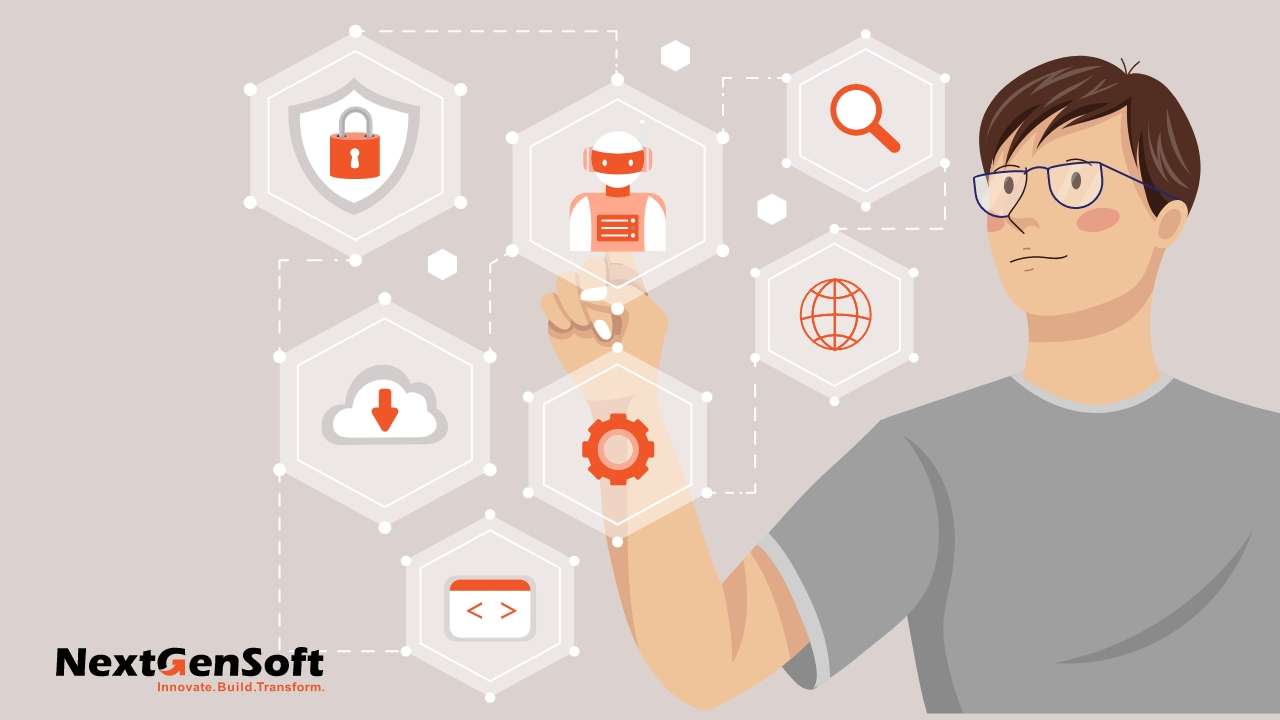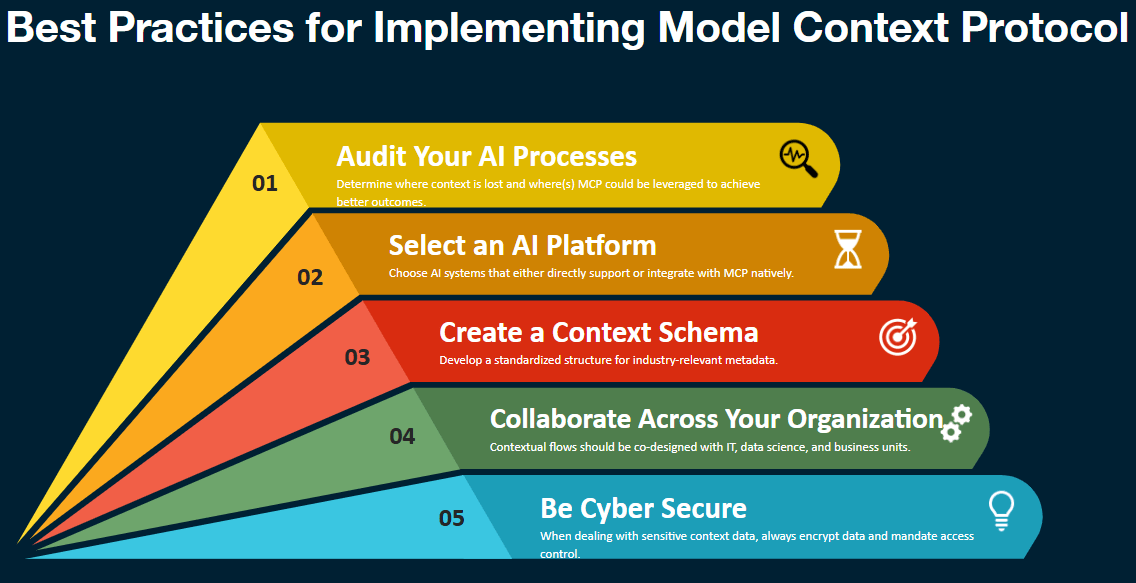

Table of Contents
As artificial intelligence (AI) matures and businesses are increasingly leveraging AI for automation, analytics, customer service, and decision making, enterprises face one challenge underlying most AI advancements: how do they integrate AI models into existing processes while being contextually aware, interoperable, and maintaining performance? This is where Model Context Protocol (MCP) comes in.
This blog will describe what Model Context Protocol is, why MCP is important for the integration of AI in today’s business environment, and how it could make intelligence scalable.
What Is a Model Context Protocol?
Model Context Protocol (MCP) is an emerging technical standard that supports the creation of a consistent, interoperable environment for AI models to develop contextual awareness in enterprise systems. This “protocol” functionality allows AI models to access and utilize the context for relevant information of any user, such as user history, current tasks, system state, permissions, and goals, in making a decision or taking action.
MCP may well be the “missing link” in ensuring AI models are not only intelligent but context-aware and working in line with business logic and purposes.
Why Does AI Integration Need Context?
The biggest shortcoming of standalone AI models is their lack of context. Most machine learning models or language models run in isolation – they take some input, produce some output, and that’s it. But in the real world, especially in enterprise environments, that’s not enough.
Imagine a customer service chatbot that doesn’t remember what your last question was, or using a predictive maintenance tool that can’t recall what machine it represents. In a narrow horizon, they work, but they aren’t doing it efficiently.
Context is the key to successfully embedding AI in the organization, because:
| Reason | Why It Matters |
| Improved Accuracy | AI can offer more relevant and accurate responses. |
| Reduced Redundancy | Avoids repetitive or conflicting actions. |
| User Intent Alignment | Ensures AI understands and follows actual enterprise goals. |
| System Harmony | Minimizes friction between departments and software systems. |
That is exactly what MCP solves by allowing AI models to utilize context.
Key Features of Model Context Protocol
Standardized Metadata Exchange
MCP allows AI models to exchange contextual metadata (e.g, user-role, past task history, state of system) in a standardized fashion. This means that regardless of whether the models are from different vendors or architectures, they can still operate in coherence around a common ecosystem.
Cross-Model Interoperability
MCP can apply to a variety of models – whether you are using LLMs for customer service, vision models for quality checks, or recommendation engines for e-commerce, MCP will help them all work together based on shared context.
Scalable Orchestration
When using the Model Context Protocol, AI orchestration at scale is much easier. You can assign actions across different models and systems, knowing that the models are operating with the same, most recent snapshot of context.
Security and Access Control
Context is sensitive information as much as it is operational. The Model Context Protocol has role-based access, encrypted communication, and traceability to ensure secure data is handled properly in AI workloads.
Five Key Applications of Model Context Protocol in the Enterprise
Intelligent Virtual Assistants
Virtual agents using Large Language Models (LLMs) can use the Model Context Protocol to keep track of user history, permission coverage, and current goals to create more valuable conversations and more precise actions.
Automated DevOps & ITSM
In AI-automated DevOps, models will understand the application logs, sample incident history, and system architectures. The Model Context Protocol provides the necessary, standardized context to automate IT Service Management or incident resolution.
Healthcare & Life Sciences
AI deployed in diagnosis or patient management has to take context reliably into account. The Model Context Protocol makes sure the models are using patient-related data, treatment protocols, and regulations accurately, and only within those strict model frames.
E-Commerce Personalization
With the Model Context Protocol, recommendation engines are able to adjust dynamically, based on users’ session history, behaviors, and preferences, and can produce higher conversion rates and overall better user experiences.
Industrial IoT and Maintenance
MCP lets AI models monitor industrial machines so they can identify which device they are observing, what maintenance history it has, and the conditions in the environment that it is operating in. This leads to better predictive capabilities.
How MCP Enhances AI Integration?
Without Model Context Protocol, AI integrations often leverage bespoke APIs, manual scripting, or brittle hacks. It adds an unnecessary level of complexity, cost, and risk.
Here is how MCP eliminates that complexity:
| Integration Challenge | Without MCP | With MCP |
| Cross-model communication | Manual, error-prone | Standardized and seamless |
| Context management | Fragmented and siloed | Centralized and structured |
| Scaling AI workflows | Time-consuming | Fast, reusable, and scalable |
| Data security | Inconsistent | Role-based and auditable |
| Business alignment | Limited awareness of business goals | Context-driven, adaptive responses |
Future of MCP in AI-Oriented Architectures
As more businesses adopt AI-first strategies, we expect that MCP will become a significant part of an enterprise architecture. Companies that are building AI platforms will consider Model Context Protocol to be a means of achieving:
- Low/no-code AI integration
- Multi-agent coordination
- Context-aware API orchestration
- Hybrid AI systems (e.g., rule-based + LLMs)
- Personalized and dynamic AI behaviors
Cloud platforms, open-source frameworks, and AI tool vendors are all currently considering ways to build Model Context Protocol into their products. Early adopters will be strategically ahead of the competition, providing AI systems that are not just intelligent but contextually aware as well.
Best Practices for Implementing Model Context Protocol
- Audit Your AI Processes: Determine where context is lost and where(s) MCP could be leveraged to achieve better outcomes.
- Select an AI Platform that is Context Aware: Choose AI systems that either directly support or integrate with MCP natively.
- Create a Context Schema: Develop a standardized structure for industry-relevant metadata.
- Collaborate Across Your Organization: Contextual flows should be co-designed with IT, data science, and business units.
- Be Cyber Secure: When dealing with sensitive context data, always encrypt data and mandate access control.
Conclusion
Model Context Protocol (MCP) is changing the deployment, integration, and orchestration of AI systems in the enterprise. By making your models context-aware, companies can enable smarter, more flexible, and more secure automation. The future of all the AI applications you have will depend on powerful protocols such as MCP; chatbots, DevOps, industrial sensors, and recommendation engines are just the beginning of what’s possible.
MCP can be the missing piece for your next-gen AI initiatives as we build new strategies that operationalize your AI capabilities that have been impeded by fragmentation.
Supercharge Your AI Integration with Context-Aware Solutions
NextGenSoft helps organizations implement intelligent and scalable AI ecosystems based on protocols like MCP. If you’re considering AI for the first time or if you’re looking to optimize your existing architecture, our team can design your organizational solutions in a future-proof manner to produce real results.
Contact NextGenSoft today and ask how context-aware AI technology can evolve your enterprise business processes!


